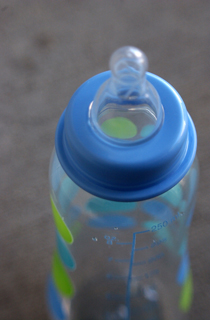
Some local parents concerned about a chemical found in plastic
containers
Food and Drug Administration (FDA) scientists relied on two
industry-funded studies to determine that Bisphenol-A, a chemical
found in some types of plastic and the interior coating of metal
food and beverage containers, has no effect on humans at current
exposure levels.
Some local parents concerned about a chemical found in plastic containers
Food and Drug Administration (FDA) scientists relied on two industry-funded studies to determine that Bisphenol-A, a chemical found in some types of plastic and the interior coating of metal food and beverage containers, has no effect on humans at current exposure levels.
Both studies were sponsored by the American Plastics Council, according to a letter from FDA staff to Congressman John Dingell, who led up a Congressional investigation. The American Plastics Council represents manufactures of plastic resins, according to their Web site.
BPA can leach into food, particularly during heating.
There are close to 100 studies that show low dose effects from Bisphenol-A (BPA) in animals, said Anita Jacob, senior scientist for the Environmental Working Group, a consumer advocacy group.
“Everything from breast cancer to prostate cancer, glucose intolerance, early puberty, infertility,” Jacob said. “The science is now about a decade old.”
FDA staff maintain that BPA is safe, at current exposure levels.
“FDA sees no reason to change its long held position that current uses with food are safe,” said Mike Herndon, a spokesperson for the FDA, in an e-mail to Pinnacle staff.
FDA staff are concerned about potential reproductive or developmental effects, Herndon said.
Although FDA staff said that BPA is found in food at safe levels, some local mothers were concerned.
Debbie Santos, a Hollister resident, has four children. Her youngest is 7 months.
Due to concerns about chemical leeching into formula, she no longer heats her baby’s bottles.
“That worries me,” Santos said. “I’d like to know more about it.”
Kristi Matthews agreed. She has two children, ages 4 and 7.
“I don’t use plastics at all for heating,” Matthews said. “It’s important to me.”
Instead of plastic sippy cups, her children use metal water bottles.
Anita Tolentino–Macaraeg, a Hollister pediatrician, recommends that her patients mix formula with warm water and then fill the bottle.
“The only thing I could say at this point is do not expose those bottles to radiation, to the light or microwave,” Tolentino-Macaraeg said.
Tolentino-Macaraeg does not know why there is so much hype about chemicals now.
“Babies have been using bottles forever,” Tolentino-Macaraeg said. “I don’t think that BPA was controlled at that point in time. I was not completely breastfed myself, and I’m fine.”
Still, the FDA guidelines are outdated, Jacob said.
“They do not take into [account] new studies showing very low does effects,” Jacob said.
It would be difficult to avoid all contact with BPA, Jacob said.
“I don’t know if we can avoid contact completely, because it’s in a variety of consumer products,” Jacob said.
For adults, the main sources of BPA would be from canned food, plastic water bottles, plastic wrap and take-out food containers, Jacob said.
For infants, the main sources of contact would be from baby bottles and formula.
Environmental Working Group staff recommend that parents switch from liquid to powdered formula and use non-BPA bottles.









